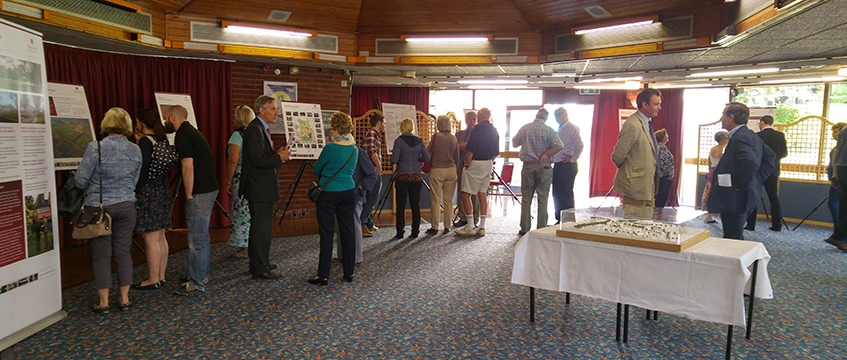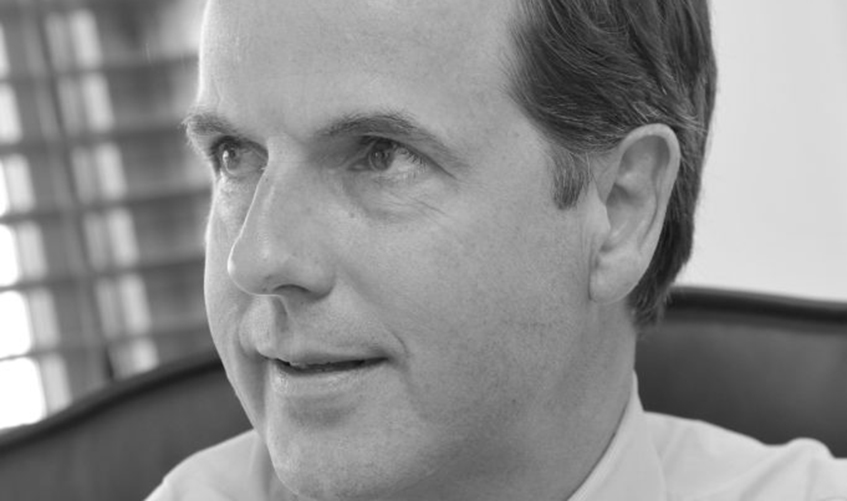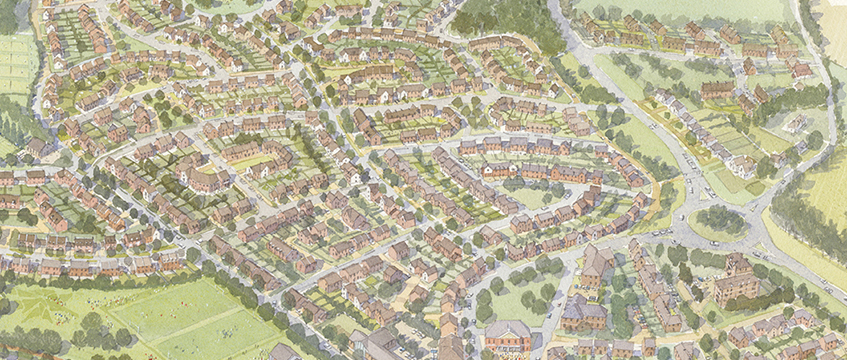The recorded history of the Southwick Estate began 500 years ago, when John Whyte bought the lands from Henry VIII during the dissolution of the monasteries.
Since 1539 the family, in one guise or another, has managed its 7,000 acres, through preparations for invasion in the Third French War in 1549 and readying for the invasion of France in the D-Day landings.
Its 21st century history, however, began in 2005, when Fareham Borough Council allocated land on its eastern boundary for 10,000 new homes and what would eventually become known as Welborne Garden Village, was born.
Now, 12 years and millions of pounds later, not a single home has been built, but a new chapter is being written into the estate’s history as two opposing sides battle for their vision of the development.
The story is slowly working its way towards a conclusion, as the pressing need for thousands of new homes takes precedence and pressure from above is heaped on both authorities and developers to build.
Like many planning stories around the UK, it is one of delays and opposing visions, and there is no right or wrong answer. So how did this epic stalemate begin and what are the chances of an amicable conclusion?
The classical period: 2005
Two men sit at the heart of the Welborne chronicle: Fareham Borough Council leader Sean Woodward, and John Whyte’s descendant Mark Thistlethwayte.
“It was my proposal, back in 2005,” claims Woodward, who says most of the borough’s housing allocation for the next twenty years is tied up in the site’s 1,000 acres near junction 10 of the M27.
The land was owned by around 10 parties, but only two had substantial holdings: the Benge Family (40%) and the Southwick Estate (50%).
Putting a council’s whole allocation into one large site is risky – a delay could scupper an entire housing allocation– but Woodward says it made sense, and is really to do with infrastructure.

“Here you have a site of 6,000 homes, that justifies and can pay for a secondary school, three primary schools, a new motorway junction, community facilities and open space,” he says.
But Thistlethwayte, heir to the Southwick lands, says the decision was for political reasons.
“[They] put it somewhere where nobody is going to object,” he says.
“That way politicians said ‘Seán you’ve done a marvellous job, you have spared having all the development in our own back yard and it makes very good sense’.”
Normally, when land is allocated and development inevitable, landowners sell up. But Thistlethwayte – a former chief executive of Rothschild UK and specialist in property lending, as well as being emotionally and historically attached to the land – decided to set up his own property company and work with the council to develop it himself.
“It became clear to us that a development was likely to happen… if we didn’t get involved we were going to have a carbuncle next to us,” he says.
In 2006, Buckland Development was born, and the Welborne saga began.
The middle ages: 2006-15
The years between 2006 and 2014 could be thought of as the manoeuvring before the main battle. Essentially, it saw a series of dialogues between the council and Buckland and the fleshing out of, and changes to, proposals for the site.
The council and local government in general was undergoing massive changes. The South East Regional Plan was scrapped, while authorities were given new responsibilities and a smaller budget under the auspices of austerity.

Against this backdrop, Fareham had to get its own local plan in place, then its core strategy, and then hold another public enquiry into Welborne.
It was not until mid-2015 that the Welborne plan was published.
During this time, Buckland was consulting and proposing, advocating 4,000 fewer homes for the site, which it said were being built on a marsh. The council eventually agreed 6,000 homes would be more suitable.
But towards the end of this period, Woodward says delays were being caused by the landowners not getting their acts together.
“We would have expected that at the public enquiry the developers/landowners would put a planning application on the table,” he says. “They did not do so, and that’s when we heard about a falling out in the Benge family.”
The family, which owns land to the south, had always intended to sell its stake and initially arranged an option with Prupim, now M&G. However, after the pension fund’s retreat from the residential market during the credit crunch, it was left without a buyer.
Eventually, the estate’s three beneficiaries – siblings – took each other to court, and the judge ordered the land to be sold on the open market for £35m by Strutt & Parker and Savills.
This, however, was not resolved until the beginning of 2017. In the meantime, the council, increasingly anxious, had decided to pursue its own course to speed up development.
2015/2016: the CPO enlightenment
After the Welborne plan was signed off in July 2015, the council announced the intention to find a development partner for the land, which it would use a Compulsory Purchase order to bring under its control, in February 2016.
It told Buckland about it in September 2015, just as it was readying its planning application.
This pushed the dispute to a new level, as Thistlethwayte says the disagreements around the Benge land never had any bearing on the scheme coming forward.

“There has never been a question about the availability of the land for development… they have always made clear and have written letters to support that the land is available, our only issue is who gets what?” he says.
From the council’s perspective, it was under pressure to build. If it did not see land allocated and granted permission, planning across the borough would be granted by default.
“That’s when we decided we had enough, we have got other sites in the borough under threat because of the lack of delivery at Welborne. That’s when I said we have got to get things moving here, that’s when we said we are minded to pursue a CPO,” says Woodward.
“There was no sign at that stage of a planning application from anybody, there was no pre-application advice taken by Buckland or Benge.”
“So whatever Mark Thistlethwayte may say to you, and I know its been his line that Fareham’s decision caused the delay… nobody is going to put in a £125,000 planning application without taking pre-application advice, are they?”
Thistlethwayte points out that no planning application could be tabled until the Welborne plan was in place, as it has design guidelines the scheme would have to adhere to, and that there had been a regular dialogue.
He thinks the council dropped the CPO for three possible reasons: either because they have never wanted Buckland to be the developer; because they want to run it themselves; or because of hostile applications around the rest of the borough.
“If I was trying to be charitable, he says, “I would say I sort of understand they might have to start a process, because Welborne does not have an adequate five-year land supply and therefore they remain vulnerable to other applications.”
While the dispute had been escalating another 1,100-home scheme was proposed in the area by Hallam Land at Newlands. Neighbouring Eastleigh Council, which did not have a five-year land supply in place, automatically went to planning by appeal, which it lost.
“By launching a CPO, that would be deemed to be moving it into their own control and that would satisfy the courts on appeal,” says Thistlethwayte.
2016 & 2017: aftermath
Thistlethwayte says that all the CPO did was delay matters. Woodward says the opposite, and insists it kick-started the process.
While the council began the hunt for a development partner, Buckland continued to ready its proposals, technically with no guarantee that it would develop the site. For another developer to step in at this stage and undermine Buckland would be difficult, expensive, and delay the scheme even longer – but it was feasible.
“We believe that they cannot succeed, bearing in mind we have demonstrated our willingness on all four of the CPO criteria” says Thistlethwayte.
Less than a month ago – 12 years on and, according to Thistlethwayte, £10m in expense – Buckland Development submitted its planning application. It says it has the finance and housebuilders ready, alongside the affordable and rental parts of the scheme. It has placed an offer on the Benge land.
Meanwhile, the threat of CPO still hangs over the site, and the council is saying it will still start its search for a development partner. After the application it issued a press release saying it would continue its current strategy until it was certain the scheme would be built.
The council is currently verifying the application, while Buckland waits to see if its offer on the Benge land is accepted, and that the council drops its opposition to them as development partner.
“Even if we win, it becomes a bit of pyrrhic victory at this stage,” Thistlethwayte says.
The future
To the victor, generally, go the spoils, and their own opportunity to re-write history. In this case, the UK’s planning system has helped ensure it will be far from black and white.
For Woodward, it is still the best strategy, and given the chance to go back to 2005, he would not change anything.
“No, no, its definitely the best option, he says. “But we now need to be delivering it… that’s why we have taken the action, we have pursued the strategy we have pursued, and its comes to fruition.”
Thistlethwayte is less bullish, though as unwavering in his decision.
“To be honest I do not think we really have any choice. The alternative would have to allow an abomination to take place for 10,000 houses on a marsh with no facilities… I think it is desperately sad the way it has to be a combative relationship. The headline of what each of us is trying to achieve is now supposedly the same, why can’t they work with us?”
The final chapter in the history of the Southwick Estate still has some way to go.
To send feedback, e-mail alex.peace@egi.co.uk or tweet @egalexpeace or @estatesgazette











